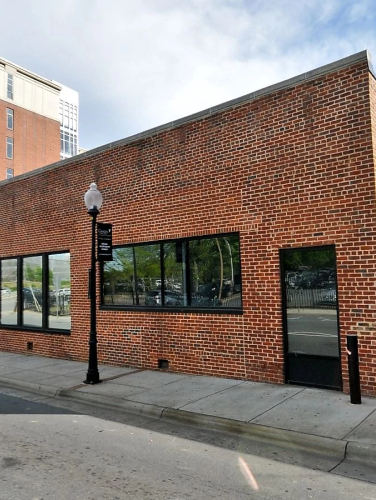
Charlotte Cotton Mill
(ca. 1880)
The first cotton mill within Charlotte’s city limits set in motion the city’s rise to the leading center for textile manufacturing in the United States.
500 & 508 W. 5th St., Charlotte, NC 28202
The Charlotte Cotton Mill was the third cotton mill built in Mecklenburg County. However, because it was the first cotton mill built within Charlotte’s city limits and the county’s only operating mill at that time, the Charlotte Cotton Mill is credited for launching Charlotte’s rise to become the nation’s leading textile manufacturer. Launched in December 1880 by Robert M. Oates (1829-1897) and his three nephews – David W. Oates (1844-1911), John E. Oates (1849-1897), and James M. Oates (1847-1925) – the mill took advantage of Charlotte’s growing railroad network, proximity to cottonfields, and ample labor resources to demonstrate to other entrepreneurs how industrialization could help the Queen City become a metropolis of the New South.
Property Quick Links
After moving to Charlotte in 1853 to begin his career as a grocery store salesman, Robert quickly added cotton brokerage services to his business. The Civil War interrupted his operations, but his service as a brigade quartermaster with the 37th North Carolina Regiment likely honed his logistics skills. In 1866, following his return to Charlotte, Robert and his nephews started a new grocery and cotton brokerage business as R. M. Oates & Company. Robert retired from the company in 1872 to pursue other interests including the refurbishment of the Charlotte Central Hotel (as its 50% owner), service as a charter director and later president of First National Bank, and political aspirations with several terms as county commissioner and city alderman. His nephews formed a new firm, Oates Brothers, to focus on cotton brokering. Later realizing that the city’s railroad network could be as beneficial to a cotton mill as it had been to his former grocery and cotton brokerage business, Robert reunited with his nephews in 1880 to form Charlotte Cotton Mill beside the Atlantic, Tennessee and Ohio (later Southern) railway tracks. Originally called Alpha Cotton Mills when it opened in late 1880, the modest single-story building boasted the latest manufacturing technology, including two huge 75-horsepower capacity boilers and a 127-horsepower single-cylinder engine, as well as tenement houses for its workforce. Within three months, a predominantly female workforce of sixty operated 5,800 of an anticipated 6,240 spindles, processing at least five 495-pound bales of cotton per day.
By 1895, the spinning operations of the rechristened Charlotte Cotton Mill (renamed in 1889) included 9,000 spindles, as well as a new weaving capacity with the addition of 208 looms to make sheets. Lured by that success, other companies built at least eight other cotton mills in the city. By 1897, Charlotte's cotton mills totaled some 75,000 spindles, consuming more than 20,000 bales of cotton annually and employing nearly 1,400 workers whose weekly pay for a fifty-five-hour work week averaged five dollars.
Following Robert’s death in 1897, increased competition in the textile industry and the rising cost of manufacturing technology drove Charlotte Cotton Mill out of business by 1910. Since then, the building has housed a variety of commercial interests including a leather belt manufacturer, a dairy production firm, and a steam laundry, as well as serving as a warehouse for the Ivey’s department stores, all before its current uses as office and restaurant space.

